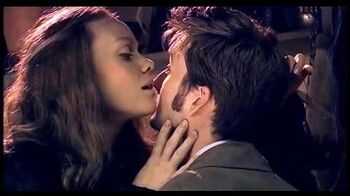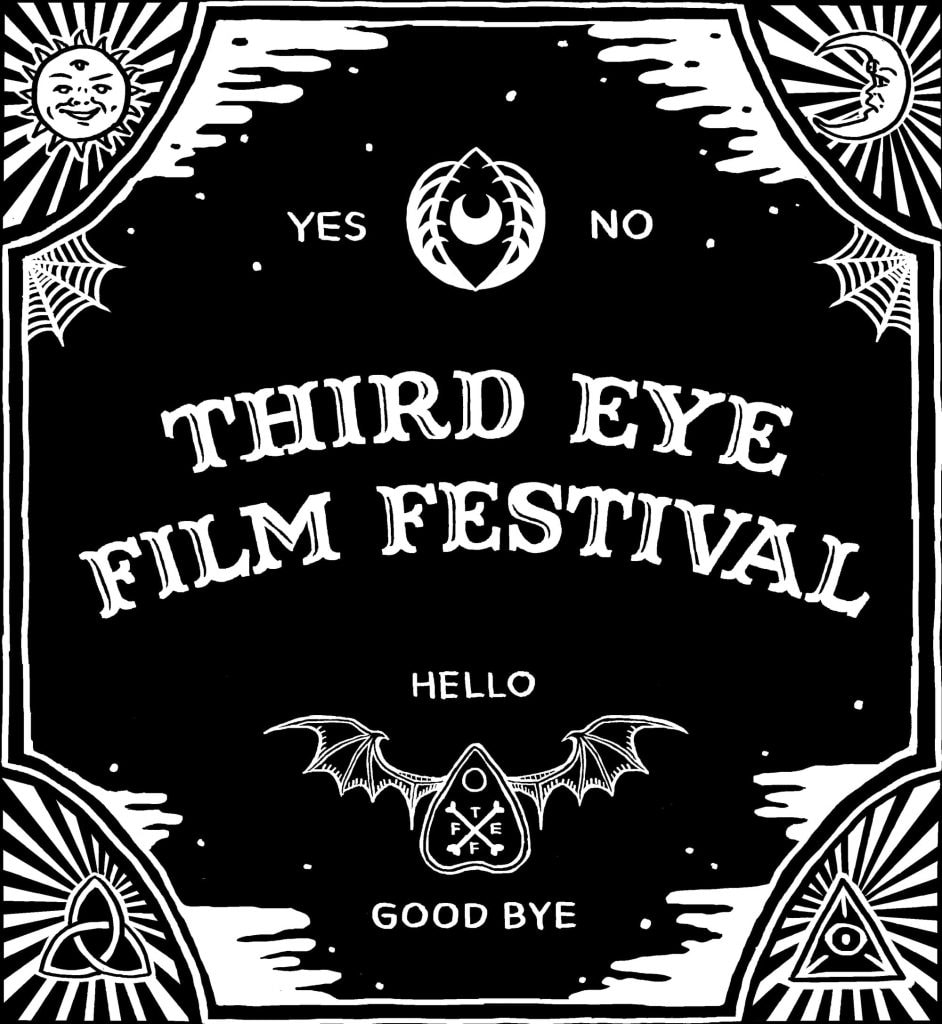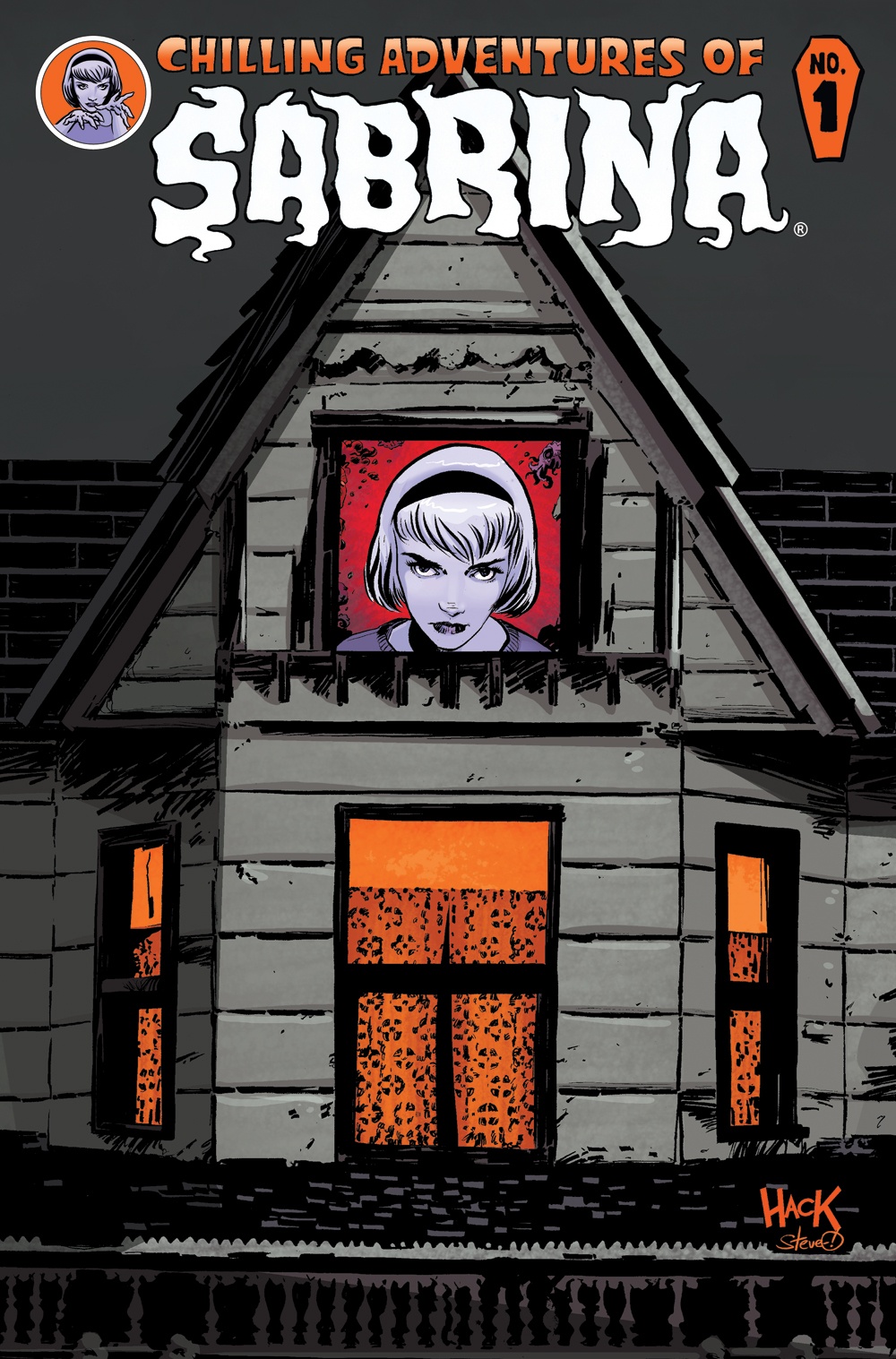We recently had the pleasure of attending the lecture "Witches, Sluts, Feminists: Exploring the Demon Feminine in Film" in the intimate black painted theater of the Miskatonic Institute of Horror Studies. The presenter was none other than Brooklyn based Kristen Sollee. Sollee is a New School faculty member and the founding editrix of the badass online magazine Slutist where the paths of politics, feminism, pop culture and the occult converge to the delight of our witchy hearts! The lecture was a peek into her new book "Witches, Sluts, Feminists: Conjuring the Sex Positive" published by Three L Media.
Saturday, December 9, 2017
Witches, Sluts, Feminists: Kristen J. Solee on the Demon Feminine in Film
Labels:
books,
Brooklyn,
feminists,
film history,
horror,
horror studies,
Kristen Sollee,
Maleficent,
Miskatonic,
misogyny,
Pam Grossman,
Phantasmaphile,
Slutist,
Sluts,
supernatural,
witchcraft,
witches
Saturday, September 16, 2017
Ep. 21: The Good Witch movie

4.0/7.0
Hello to all you wonderful listeners out there! It's been a little while but I am back with a brand new episode for your listening pleasure. Episode 21 is all about the original Hallmark channel 2008 movie "The Good Witch" starring Catherine Bell, Chris Potter and Catherine Disher. Catherine Bell plays Cassandra Nightingale, the "witch" of the movie's title. The movie's script was written by Rod Spence and it was directed by Craig Pryce.
The original movie spawned seven other movies including: The Good Witch's Garden, The Good Witch's Gift, The Good Witch's Family, The Good Witch's Charm, The Good Witch's Destiny, The Good Witch's Wonder and Good Witch Halloween. The TV show "The Good Witch" soon followed in 2015 and is now in season 4 which is scheduled to begin in October 2017. "The Good Witch" clearly has connected with a lot of people and has become a successful franchise for the Hallmark Channel.
Herbs are an important part of Cassie's practice in the movie and she uses them to heal naturally. Rosemary Gladstar has a great website called "The Science and Art of Herbology" which is chock full of good information. From a magical perspective, Paul Beyerl's "The Master Book of Herbalism" and "A Compendium of Herbal Magic" are two excellent resources.
If you are interested in crystals, two good resources to start with are Judy Hall's "The Encyclopedia of Crystals" and "The Crystal Bible". For those of you interested in essential oils, Julia Lawless' "The Encylopedia of Essential Oils is another great book resource. Lady Rhea's book "The Enchanted Formulary" is a fantastic for the magical use of essential oils, blends and fragrances.
"Ojibwe Stories" is a podcast about Ojibwe culture, language and ideas hosted by Dr. Erik Redix, an Assistant Professor of American Indian Studies at the University of Minnesota Duluth. Also, be sure to check out the podcast episode "Language and Meaning: An Ojibwe Story" of the podcast "On Being by Krista Tippett. Indian Country Today has an article on 12 Great Native American Podcasts for your listening pleasure.
The episodes' music is "Bare to the Bone" and "The Gathering of Spirits" by Carrie Newcomer, "Only" by Alex Mason & The Minor Emotion and "Glow in Space" by Sergey Cheremisinov provided by the Free Music Archive.
So farewell for now! Be sure to join me on my
next episode and follow the show on Twitter and Instagram where it is
@thewytchfiles and The Wytch Files on Facebook.
If you have any feedback or review suggestions, please contact me!
If you're liking the show, please review it on iTunes, Stitcher and iHeart.
Labels:
affirmations,
amethyst,
black cat,
Catherine Bell,
cinnamon,
crystal,
dreamcatcher,
essential oil,
grey house,
grey lady,
Halloween,
herbs,
magic,
magick,
shamrock,
The Good Witch,
witch,
witchcraft
Monday, July 31, 2017
Ep. 20: What is a Witch by Pam Grossman
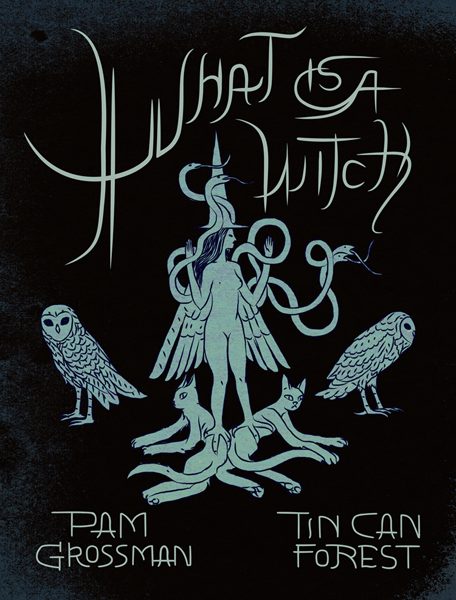 Hello My Lovelies! I'm excited to bring you my review of Pam Grossman and Tin Can Forest's book "What is a Witch". I hope you enjoy the episode as much as I did both reading and experiencing the book!
Hello My Lovelies! I'm excited to bring you my review of Pam Grossman and Tin Can Forest's book "What is a Witch". I hope you enjoy the episode as much as I did both reading and experiencing the book!Pam Grossman's blog Phantasmaphile is a glorious aggregation of wonderful media featuring the occult and it is lovingly written by Pam. Please be sure to check it out along with Pam's professional website.
Pam wrote an essay called The Witching Hour. It's about witches in film and you can read it here. If you prefer a video version of the essay, you can find the complete video here on Vimeo. YouTube does not appear to have the complete video.
Tin Can Forest is the collaborative artistic project of husband and wife team Pat Shewchuck and Marek Colek. They are the gloriously visual component of "What is a Witch" that helps bring Pam's words to life. Together they also publish books through Tin Can Forest Press. You can check out their work, buy their books and prints and keep up with what they are up to at their website Tin Can Forest.
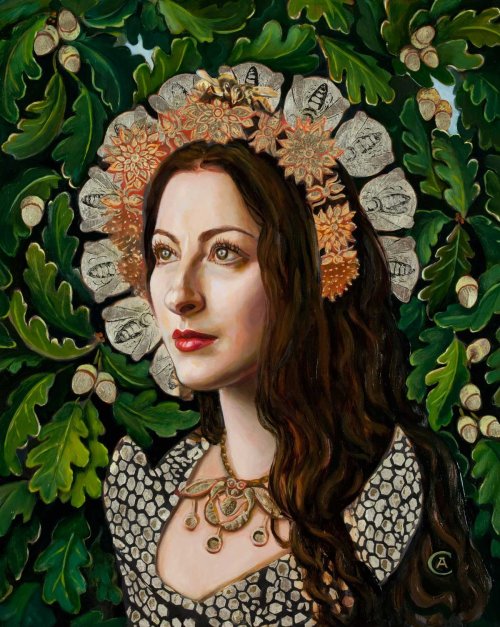 | |
| Pam Grossman as Mente by Carrie Ann Baade |
The episode talks briefly about artist and occultist Austin Osman Spare and here is Fulgur's page on the artist with a biography and links to selected essays about his magical work. Frater U. D. writes about Spare's and his theory of sigils in this article.
"What is a Witch" makes mention of plants used by witches both in the text and artwork. Harold Roth is a magical practitioner, alchemist, gardener and herbalist extraordinaire and he has a wonderful blog called The Alchemist's Garden and his online shop Alchemy Works. Harold also has a great new book out called The Witching Herbs that is a wonderful resource.
In the episode, I speak briefly about two talented female artists and witches mentioned in "What is a Witch". These two artists are Leonora Carrington and Remedios Varo. You can check out more information about Leonora and her work at this website dedicated to her legacy. The portrait to the left of this text is of Leonora. You can check out the work of Remedios Varo here.
The episode's music is "Springish" by Gillicuddy and "The Girl With The Kaleidoscope Eyes, Pt. 2" by Pachyderm provided by Free Music Archive.
So farewell for now my lovelies! Be sure to join me on my next episode and follow the show on Twitter and Instagram where it is @thewytchfiles and The Wytch Files on Facebook.
If you have any feedback or review suggestions, please contact me!
If you're liking the show, please review it on iTunes, Stitcher and iHeart.
Labels:
Baba Yaga,
books,
Brooklyn,
esoteric,
familiars,
feminism,
feminists,
folk tale,
Hecate,
herbs,
history,
lunar eclipse,
magic,
occult,
Phantasmaphile,
sorceress,
supernatural,
witchcraft,
witches
Thursday, June 29, 2017
Ep. 19: Dr. Who - The Shakespeare Code
Hello and welcome to Episode 19 of The Wytch Files in which I bid farewell to my co-host Sabrina Khan and discuss all things regarding the Dr. Who episode The Shakespeare Code. The Season 3 episode aired on April 7, 2007. It starred David Tennant as the Tenth Doctor, Freema Agyeman as Martha Jones, Dean Lennox Kelly as Shakespeare and Christina Cole as Lilith. The episode was written by Gareth Roberts and directed by Charles Palmer.
In the episode, I discuss the cunning folk of Early Modern Europe and three good books on the subject are Popular Magic: Cunning-folk in English History by Owen Davies, Cunning-Folk and Familiar Spirits: Shamanistic Visionary Traditions in Early Modern British Witchcraft and Magic by Emma Wilby and The Cunning Man's Handbook: The Practice of English Folk Magic 1550-1900 by Jim Baker.
Elizabethan England was rife with superstition and folklore. This blog post discusses Superstition, Folklore and Astrology in Shakespeare's time.
Sir James George Frazer wrote about sympathetic magic in his study on magic and religion titled The Golden Bough.
The use of poppets in magic has a long history dating back to at least ancient Egypt. Here is an essay on the construction and use of poppets in ancient Greece.
Remote viewing experiments were conducted in the 1970's and 1990's by the Stanford Research Institute and this Parapsychology Journal article from 1979 discusses a replication of their experiment conducted in Chicago. This article discusses the connection between scrying and the Book of Mormon.
The Elizabethan theater is the main setting of the episode and this essay describes what the theater was like in that time period.
The music in the episode was The Witches' Dance (incidental music to Shakespeare's Macbeth Act III) by Anonymous and played by Jon Sayles and Kyrie Eleison by Giovanni Animuccia provided by Free Music Archive.
So farewell now to all you lovely seekers! Be sure to join me on my next episode and follow the show on Twitter and Instagram @thewytchfiles and The Wytch Files on Facebook.
If you have any feedback or review suggestions, please contact me at thewytchfiles@gmail.com! If you're liking the show, please follow it on social media and review it on
Thursday, May 25, 2017
Ep. 18: Third Eye Film Festival
Hello beautiful seekers and welcome back to The Wytch Files! In this installment, we are very pleased to bring you an episode regarding the divine Third Eye Film Festival. We take a closer look at the magick behind a handful of the films from TEFF's talented roster of filmmakers who were featured during their recent NYC event in December 2016.
Third Eye Film Festival is getting ready to do it all again from May 27th to May 28th in New Orleans, LA at Bar Redux Nola! If you are in the New Orleans area please be sure to check the festival out!
The Third Eye Film Festival is the love child of founders Namrata Desai and Darian Brenner. They created the festival in order to showcase films with themes of fantasy, horror, occult and mysticism and to support the work of female filmmakers in these genres. We can tell you from first hand experience that they succeeded in achieving those objectives!
For this episode, we chose six short films from their December 2016, three day programing, which featured a magical practitioner and/or a supernatural/occult theme. The short films are:
 Entering the Flesh Again
Entering the Flesh Again
Written, directed, produced, & edited by Namrata Desai
Cinematography by Darian Brenner and starring Marian Rose, Michael Fleming, Dylan McDonough.
“A woman emerges into a dreamlike landscape, where a charming stranger triggers memories from her soul’s past. She seeks a new beginning, realizing it can only come from her ending. "Entering the Flesh Again" explores the parallels between reincarnation and the transience of relationships.”
The film begins with the triskele symbol also known as the triskelion. The word triskele has a Greek origin and means three legs. The triskele is an ancient Neolithic symbol that appears in many early cultures including among others, Malta, Greece, Sicily, and Ireland. It appears on the Newgrange kerbstones which date from approximately 3200 BC. The symbol is also used by other European countries such as Britain, Germany and Sicily. In the case of Sicily, the symbol probably dates back to when the island was a colony of ancient Greece. The triskele features prominently in ancient and modern Celtic art. One theory, is that for the ancient Celts, it represented various trinities such as life-death-rebirth, earth-water-sky, spiritual-physical-celestial and past-present-future. Another theory is that it represented reincarnation as the triskele symbol is made of one continuous line.
Reincarnation is a central theme of Entering the Flesh Again and is believed to have been an important aspect of ancient Celtic spirituality and the stories about their heroes. It also is an important tenet of Hinduism.
Color symbolism is also featured in the film particularly in the clothing worn by the main protagonist. You can read more about the meanings of various colors here.
The film features an Irish fairy tree and Ali Isaac Storyteller has a great article about these special trees.
Starring Mackenzie De Zilva, Ferdelle Lauren Capistrano and Isai Rivera Blas. Also starring Dorina Perera, Ian Perera, Maria Aniana Tugade, Ryan Mendoza, Kristel Salas and Rebecca Barrido.
“Fearful villagers gather at the bedside of a woman nearing labour as they prepare for the presence of a sinister creature. Set in the Philippines, TIK-TIK is based off of a popular creature in Filipino folklore, known as the Aswang."
The Aswang called a Tik-Tik in the film is a combination vampire and shapeshifter. "The Filipino Vampire - The Aswang Phenomenon" is a Discovery channel documentary that explores the myth. Here is an article on "The Aswang Vampire Demon of the Phillipines".
The film features a Hilot healer who is called in to serve as a midwife for a delivering mother. Hilot is an ancient Filipino art of healing. To learn more about this healing art take a look at "Hilot: Tradition and Science".
Behind the scenes, the crew had a creepy problem with some of the equipment during filming, which kept happening at the threshold of the bedroom, as they crossed under the opening of the attic. The camera’s stabilizer would fail, and images would flash across the screen. Did they call in a tik-tik? Take a look at their behind the scenes video and decide for yourself!
GIFTED
Captained, written, directed & edited by Stephanie Twyford Baldwin. Cinematography by Stephanie Twyford Baldwin. The film is produced by Part Time Hooligan starring Stephanie Twyford Baldwin, Ryan Rigley & Melissa Rocha.
 “In this Part Time Hooligan dark comedy, a young and powerful witch must face an unwelcome visitor.”
“In this Part Time Hooligan dark comedy, a young and powerful witch must face an unwelcome visitor.”As per the director, the film was directly inspired by the movie The Craft. For a complete review of The Craft, be sure to check out Episode 12 of our show. The characters in Gifted visit a "shadow realm" which is based on the Japanese anime Yu-Gi-Oh!.
In the episode, we speak about how some pagans believe in the existence of other realms that exist separate from the mundane world. For example, in Norse mythology, there are the Nine Worlds and in Celtic mythology there was the Otherworld.
IN THE CARDS (A VERY DRAMATIC FILM)
Written by Jaime Lubin, directed by Kalista Tazlin, and starring Jaime Lubin, Kalista Tazlin & Jesse Cord Weber.
“A young woman seeks the help of a psychic after having doubts about her relationship with her much wealthier fiancé. But her visit to the clairvoyant's shop brings forth a dark presence, altering her life - and those around her - forever.”
In this Huffington Post article, the director Kalista Tazlin goes into some of the background of the film.
"In the Cards" features a character named Cassandra who is a tarot card reader. In Greek mythology, Cassandra was the daughter of King Priam of Troy who had the powers of prophecy. You can read more about Cassandra in Greek Mythology here. Cassandra also had a hero's cult in Lakonia.
The tarot deck featured in the film is the Rider Waite Smith deck created by occultist Arthur Edward Waite in collaboration with illustrator Pamela Colman Smith (a/k/a Pixie). You can read more about Ms. Colman Smith in the article "Pamela Colman Smith, the Forgotten Artist Behind Your Tarot Cards". Sacred Texts also has a free copy of A.E. Waite's "The Pictoral Key to the Tarot" which is the book that Waite wrote to accompany the deck. We also mention the creepy Sola Busca tarot. For the scoop on this unsettling early Renaissance deck, check out this episode of Gordon White's Rune Soup with Michael M. Hughes.
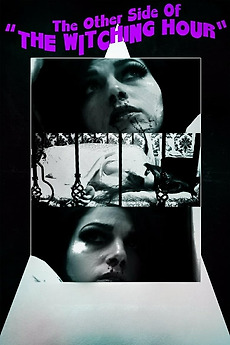
THE OTHER SIDE OF THE WITCHING HOUR
Directed by Tavarna Caris Garvey and starring Tasmin Leona.
“A spellbinding journey into the mind of an insomniac, who spends each night haunted by strange and wonderful illusions from another world.”
The film delves into the altered states of an insomniac and Carl Jung's themes of the collective unconscious, dream interpretation, and archetypes come to mind.
The young woman also meets with her shadow side during her nightly travels and the importance of embracing your shadow self is highlighted. She also enters the Otherworld of the fairies and encounters a fairy feast triggering a sort of Stendhal syndrome.
The film also explores the connection between dream, sleep and death which is seen in ancient Greek mythology (Nyx, Thanatos, Hypnos and Erebos). It turns out that a certain amount of dreaming each night is actually good for you and it is not good to be sleep or dream deprived.
The Other Side of The Witching Hour also has parallels to Lewis Carroll's Alice in Wonderland books.
THE STRANGE CASE OF EMILY GREY
Directed by Luigi Pairisi. Starring Francesca Palmas, Martine Brochard, Massimo Palazzini, & Vittorio Aparo.
“Following a seance gone wrong, famous medium Emily Gray chases out the door the clumsy followers who formed the chain with her (the seance) "you are not professionals, you are scoundrels!!" she shouts. But the spirit that was contacted was not a benevolent entity and soon Emily will be attacked."
This short horror film features a spirit board with the symbols "JHS" which most likely refers to J.H. Singer, a game company that created and manufactured a planchette game board in 1893 called the Mystic Wander.
Mediumship and spiritualism are briefly depicted in the film via a seance and many spirit workers are familiar with the works of Allan Kardec and his books on communicating with spirits. Who could also forget the famous Fox sisters from the Burned-Over District of New York state. Ouija boards also have a tainted history that is addressed in this article by the Smithsonian.
Banishing spirits that we call up intentionally or unintentionally is extremely important or they will wreck havoc with our lives! There are many herbs that can help with protection from spirits and can also help you banish them. Magical rings have been used for protection going back to classical antiquity. Too bad Emily treated her pentacle ring so disrespectfully, it could have offered her some measure of protection!
So farewell now to all you lovely seekers! Be sure to join us on our next episode and follow us on Twitter and Instagram where we are @thewytchfiles and The Wytch Files on Facebook.
If you have any feedback or review suggestions, please contact us!
If you're liking the show, please follow us on social media and review us on iTunes.
Saturday, April 22, 2017
Ep. 17: Elvira, Mistress of the Dark (1988)
2.5 / 7.0
 |
| Out on Blu-ray April 24th! |
Hello, darlings! In this episode we bring you the "ghoul that put the boob back into boob tube," Elvira!
Elvira, Mistress of the Dark is a 1988 comedy horror film directed by James Signorelli. Cassandra Peterson plays the role of horror hostess Elvira in the character's feature film debut. The screenplay was written by Cassandra Peterson, John Paragon and Sam Egan.
Local late-night horror hostess Elvira quits her job after being sexually harassed by the TV Station owner and finds herself in a lurch to cover the expenses for her dream gig, her own Vegas show. A telegram serendipitously arrives announcing her inheritance from an unknown Great Aunt in Massachusetts. Elvira travels with high hopes only to arrive in a conservative hostile town and be the new owner of a dog, a book, and a run-down victorian house.
Fallwell, Massachusetts is a "decent" community. They are ultra conservative, with NO FUN ALLOWED. The town name a riff on Jerry Falwell, prominent contemporary televangelist preacher and member of the Moral Majority movement - many of whom were majorly immoral!
In the episode we talk about the use of language in magic and here are some examples of some magical alphabets. The Enochian or Angelic language of John Dee is an example of a magical language. Aaron Leitch discusses this magical language in his article The Tongue of Angels. Here is a fun article on how fantasy has used language as magic. If you are interested in learning more about magical alphabets, Nigel Pennick's book "Magical Alphabets" is a good place to start.
Elvira's great-uncle Vincent uses the energy of the lunar eclipse to fuel his grand rite to become the Master of Dark. Lunar eclipse magic and folklore is discussed in this post by Patti Wigington.
Elvira's great-aunt Morgana is a great example of an ancestral spirit. Honoring the ancestors and the dead is an important aspect of many pagan spiritual paths. You can read more about it here, here and here. This great post also discusses setting up ancestral altars and rituals.
In the episode we talk about the use of language in magic and here are some examples of some magical alphabets. The Enochian or Angelic language of John Dee is an example of a magical language. Aaron Leitch discusses this magical language in his article The Tongue of Angels. Here is a fun article on how fantasy has used language as magic. If you are interested in learning more about magical alphabets, Nigel Pennick's book "Magical Alphabets" is a good place to start.
Elvira's great-uncle Vincent uses the energy of the lunar eclipse to fuel his grand rite to become the Master of Dark. Lunar eclipse magic and folklore is discussed in this post by Patti Wigington.
 |
| The Witch and her Familiar |
Algonquin (a/k/a Gonk) is Elvira's Mohawk-sporting, punk rock poodle familiar. Sara Anne Lawless' blog post introduces us to animal familiars. Emma Wilby's book "Cunning-Folk and Familiar Spirits" is a good book to explore the relationship between witches and their familiars in early modern Britain. England has a rich history of phantom black dogs and you can read a little about them here. This post addresses the lore and legend of the black dog.
Elvira wears a family ring that not only functions as conductor for her magic but also functions as an amulet. Amulets have a long history in magic. While most people are familiar with objects as amulets, pieces of written text was also used as amulets. This movie is full of boob humor but in the ancient Roman world the phallus symbol had some interesting uses including warding.
And the Queen of Halloween is still going strong! Cassandra Peterson still stunning as Elvira at age 65, thanks to good clean living, a vegetarian diet and regular exercise. For all the latest Elvira news, head to the official website.
Theme music X-Files Theme Parody by Mallon Khan.
If you have any feedback or review suggestions, please contact us!
If you're liking the show, please follow us on social media and review us on iTunes.
Labels:
amulets,
dreams,
Elvira,
familiars,
ghosts,
Goth,
grimoire,
hell hound,
horror,
lunar eclipse,
magic,
magical alphabets,
movies,
necromancy,
occult,
spells,
spirits,
supernatural,
witchcraft,
witches
Saturday, April 1, 2017
George Romero's Season of the Witch (Hungry Wives)
 Season of the Witch is a movie that has been on my radar for a long time but kept getting relegated to my “to be watched later” pile in favor of other movies that I was more excited to watch. As a result, I did not watch it until very recently when we decided to do a review of The Love Witch and I found out that Season of the Witch was one of the director's influences. I felt this was finally the right time to watch it. When I did, I was surprised at how good it was not only for its feminist commentary on the societal role of American women in the early 1970’s but also for it’s portrayal of witchcraft. The film’s presentation of witchcraft will be the focus of this post but first let’s provide a brief synopsis of the film to provide a context for the magic.
Season of the Witch is a movie that has been on my radar for a long time but kept getting relegated to my “to be watched later” pile in favor of other movies that I was more excited to watch. As a result, I did not watch it until very recently when we decided to do a review of The Love Witch and I found out that Season of the Witch was one of the director's influences. I felt this was finally the right time to watch it. When I did, I was surprised at how good it was not only for its feminist commentary on the societal role of American women in the early 1970’s but also for it’s portrayal of witchcraft. The film’s presentation of witchcraft will be the focus of this post but first let’s provide a brief synopsis of the film to provide a context for the magic.Season of the Witch is a 1972 movie written and directed by George A. Romero starring Jan White as Joan Mitchell. The film takes place during the 1970’s in a predominantly white, upper middle class, California suburb. Joan, our protagonist, is a woman in her 40’s, who is married to a successful businessman. Her husband Jack is always working and has little time for her. Joan feels like she is slowly dying inside as she goes through the motions of her daily life. Her daughter is in college and is mostly independent of her. Joan also feels like she is getting older and is losing her beauty and desirability. In addition, the film implies that she is being emotionally and physically abused by her husband.
One evening, at a social event, Joan hears about a mutual acquaintance who is a witch. Joan who was raised a devout Roman Catholic, finds herself surprisingly intrigued. The next day, Joan and a friend pay a visit to the witch’s home to have a tarot card reading. The witch tells Joan and her friend about her family tradition and how she got into witchcraft. Joan borrows a book on witchcraft and takes it home. She begins reading the book and finds herself connecting with it. She immediately sees it as a way for her to regain her own sense of power and identity. She starts practicing witchcraft using the book as her guide which takes her on the road to both personal empowerment and tragedy.
The movie establishes from the beginning that Joan’s unconscious mind is trying desperately to communicate with her through her dreams. The film opens with a dream sequence in which Joan walks behind her husband through a wooded area. As the husband walks, he reads the newspaper and carelessly let's tree branches hit Joan in the face as he lets them go. When the couple reaches home, the husband locks Joan up in a dog kennel. The dream symbolizes Joan’s feelings of powerlessness, loss of identity, loneliness, and neglect. She is disconnected from her husband and feels her life is fully planned and orchestrated by him. She feels like a trained dog which her husband can command at will and lock away for safekeeping when he travels for work.
Joan’s dreams are also prophetic in nature. In her dream at the opening of the movie, she is offered sexual services by a handyman working on her home. The handyman turns out to be her daughter’s college teaching assistant Gregg who Joan later has a brief sexual fling with.
 Joan also has a nightly dream of a masked intruder who enters her home and attacks her. The intruder wears a rubber “Green Man” mask. In Wicca and in some other forms of neopaganism, the Green Man is a nature spirit representing the underlying life-force and cycle of growth of vegetation each Spring. Some Gardnerian Wiccans see the Green Man as derived from the Old God of Fertility and therefore attribute to him some of the same primal sexual energy this deity possesses.* On the surface, the intruder in Joan's dream represents her husband violently exerting power over her and standing in the way of her transformation. On a deeper level, the dream represents Joan’s initial subconscious fear of witchcraft and its philosophy of personal freedom and sexual liberation and her resistance to make that transformation. The Green Man represents her own repressed sexual desires being exhibited in a negative way. Like the old witch trial accounts, the Green Man could also be Joan’s “Devil” come to initiate her through sex.
Joan also has a nightly dream of a masked intruder who enters her home and attacks her. The intruder wears a rubber “Green Man” mask. In Wicca and in some other forms of neopaganism, the Green Man is a nature spirit representing the underlying life-force and cycle of growth of vegetation each Spring. Some Gardnerian Wiccans see the Green Man as derived from the Old God of Fertility and therefore attribute to him some of the same primal sexual energy this deity possesses.* On the surface, the intruder in Joan's dream represents her husband violently exerting power over her and standing in the way of her transformation. On a deeper level, the dream represents Joan’s initial subconscious fear of witchcraft and its philosophy of personal freedom and sexual liberation and her resistance to make that transformation. The Green Man represents her own repressed sexual desires being exhibited in a negative way. Like the old witch trial accounts, the Green Man could also be Joan’s “Devil” come to initiate her through sex.
The film contains several scenes where Joan is either going through a stressful situation or lamenting the fact that she is growing older and the figurine of a bull is prominently shown. The look of the bull figurine evokes the sacred bulls from Catal Hoyuk, Mesopotamia and the Minoan civilization. In Catal Hoyuk, the bull had a questionable connection to Mother Goddess worship. In Season of the Witch, it’s possible that Romero chose the bull figurine for its lunar and goddess connections or simply for its subtext of raw, primal, sexual energy. The divine bull of antiquity was a symbol of many things including the moon, fertility, royal power, the gods, rebirth and salvation.
 The magic and rituals depicted in the film are all straight out of Paul Huson’s book “Mastering Witchcraft: A Practical Guide for Witches, Warlocks and Covens” initially published in 1970.** Paul Huson is a British occultist, writer, and producer who received his occult training from the Society of the Inner Light and the Order of the Stella Matutina. He’s authored several books on witchcraft, magic, herbalism, and the tarot. His book “Mastering Witchcraft” has become an enduring classic since its publication in 1970. The book has gotten some flack from segments of the neopagan community because it teaches countermagic, vengeance and attack magic. I know friends who were studying Wicca who were warned off the book by their teachers because it was felt to violate Wiccan ethics. The warnings however just made them run out to get a copy of the book just to see what all the hubbub was about. “Mastering Witchcraft” however teaches a non-Wiccan type of witchcraft. As Mr. Huson explains in his website, “Mastering Witchcraft” was a “hands-on guide for the would-be witch or warlock” “It was not a Wiccan handbook.” From my reading of the book, Mr. Huson leaves the decision of whether to use the spells or not in the hands of the reader.
The magic and rituals depicted in the film are all straight out of Paul Huson’s book “Mastering Witchcraft: A Practical Guide for Witches, Warlocks and Covens” initially published in 1970.** Paul Huson is a British occultist, writer, and producer who received his occult training from the Society of the Inner Light and the Order of the Stella Matutina. He’s authored several books on witchcraft, magic, herbalism, and the tarot. His book “Mastering Witchcraft” has become an enduring classic since its publication in 1970. The book has gotten some flack from segments of the neopagan community because it teaches countermagic, vengeance and attack magic. I know friends who were studying Wicca who were warned off the book by their teachers because it was felt to violate Wiccan ethics. The warnings however just made them run out to get a copy of the book just to see what all the hubbub was about. “Mastering Witchcraft” however teaches a non-Wiccan type of witchcraft. As Mr. Huson explains in his website, “Mastering Witchcraft” was a “hands-on guide for the would-be witch or warlock” “It was not a Wiccan handbook.” From my reading of the book, Mr. Huson leaves the decision of whether to use the spells or not in the hands of the reader. Joan is also seen taking a verse or prayer from the bible and writing it backwards. She then recites it backwards. This is taken directly from “Mastering Witchcraft” Chapter 1: First Steps, pg 19-21 where the new witch is asked to make a “symbolic gesture which will ceremoniously demonstrate your severance from old restraints and inhibitions that in the past have acted as the main obstacles to the development of the powers within you.” Organized religion is one of these major obstacles and so the new witch is asked to write the Lord’s Prayer backwards and recite it on three successive nights just prior to going to bed while visualizing the great shackles of oppression being struck from her hands and feet by bolts of lightning.
Joan is also seen taking a verse or prayer from the bible and writing it backwards. She then recites it backwards. This is taken directly from “Mastering Witchcraft” Chapter 1: First Steps, pg 19-21 where the new witch is asked to make a “symbolic gesture which will ceremoniously demonstrate your severance from old restraints and inhibitions that in the past have acted as the main obstacles to the development of the powers within you.” Organized religion is one of these major obstacles and so the new witch is asked to write the Lord’s Prayer backwards and recite it on three successive nights just prior to going to bed while visualizing the great shackles of oppression being struck from her hands and feet by bolts of lightning. You later see Joan performing a spell on Greg (her daughter’s college teaching assistant) compelling him to come to her. She stands outside in front of a simple altar consisting of a black candle and a lit cauldron. She recites “By the moon, by the star, by the light in my hand…, Prince of Mercury and Earth, I conjure thee to torment Gregory Williams that he come to me tonight and accomplish my will.” We see a similar love spell in “Mastering Witchcraft: Chapter 4: Spells for Lovers, pg 107-111. Huson appears to have based his love spell on a spell from the 18th century grimoire the “Grimorium Verum”. In the Grimorium Verum, the spell is titled “To Make a Girl Come to You, However Modest She May Be”.*** Joan waits for Greg to appear but she becomes inpatient and calls him on the telephone. He comes over and they have sex for the first time.
You later see Joan performing a spell on Greg (her daughter’s college teaching assistant) compelling him to come to her. She stands outside in front of a simple altar consisting of a black candle and a lit cauldron. She recites “By the moon, by the star, by the light in my hand…, Prince of Mercury and Earth, I conjure thee to torment Gregory Williams that he come to me tonight and accomplish my will.” We see a similar love spell in “Mastering Witchcraft: Chapter 4: Spells for Lovers, pg 107-111. Huson appears to have based his love spell on a spell from the 18th century grimoire the “Grimorium Verum”. In the Grimorium Verum, the spell is titled “To Make a Girl Come to You, However Modest She May Be”.*** Joan waits for Greg to appear but she becomes inpatient and calls him on the telephone. He comes over and they have sex for the first time.Joan invites Greg over the following night in order to help her perform a conjuration of the demon Verago (a fictitious name created for the movie) which in “Mastering Witchcraft” is Vassago who is counted as one of the 72 demonic intelligences in the medieval grimoire “The Goetia: The Lesser Key of Solomon the King”. The movie did not indicate the purpose of the ritual or why Joan had to perform the ritual. In “Mastering Witchcraft”, the ritual is performed for the purpose of divination by questioning the entity, pg 79. The ritual depicted in the movie is based on “Mastering Witchcraft” Chapter 3: Divination, pg 78-86. Joan completes the ritual and thinks it unsuccessful but two things happen, first, a mysterious black cat appears (he crawled through an open window) and second, Greg apparently possessed by the entity forces himself on Joan and rapes her. Afterwards, Joan tells Greg she doesn’t want to see him again and he leaves. She terminates the operation and repeats the words that license Vassago to depart. At least, she had the good sense to terminate the operation properly! The cat however sticks around indicating he is possibly her witch familiar.
The following day, Joan seems happier, she blows at a dandelion while she gardens and does her housework. At night, a rain storm is in full progress, Joan dreams of the Green Man once more. In the dream, she loads her husband’s shotgun with bullets and tries to shoot the Green Man but ends up engaging in a struggle with him which wakes her up. She sees the cat on her altar and screams. Meanwhile, her husband’s friend drops him off at the house during the storm. The friend drives away and the husband approaches the front door. He tries to open it but the chain on the door prevents him from entering. He swears out load and then you see Joan shoot him several times with his shotgun through the window over the door. The movie leaves it open as to whether Joan shot him by accident thinking he was a burglar or whether she shot her husband intentionally. The cops come to the house to investigate and you hear them making misogynistic statements about how it doesn’t matter whether the wife is lying or not because she will get away with it and how women always get everything in the end.
The shooting scene is intercut with scenes from Joan’s initiation ritual into her coven’s tradition. The ritual is from “Mastering Witchcraft”, chapter 7: The Coven and How to Form One. It is a combination of the “The Robed Initiation” and “The Sky-Clad, or Naked, Initiation” rituals described in the chapter. Only a portion of the ritual is shown in the movie. All the witches participating in the initiation ritual are women and range in age from the young to the elderly. The high priestess is robed in a purple caftan with a flower pattern. All the coven members are dressed in black robes except for Joan who is naked or skyclad.
You see Joan being challenged with questions and a sword placed at her breast, by the guardian of the watchtower of the north, the realm of the element of earth. The guardian asks her where she is going and she replies that she is traveling from the north, the place of greatest darkness to the east in search of light. She is asked for the passwords and she replies “perfect love and perfect trust”. The guardian of the north states that she cannot enter until she is purified and consecrated. Joan is next seen being consecrated with all four elements. She receives the five-fold kiss and a red cingulum (cord) is tied around her neck. She is lead to the front of the altar where she is tethered to a ring by the free end of the cingulum hanging from her neck. She is ritually scourged by the High Priestess. She is asked why she has entered among them and she replies that she would know herself for what she is. She is also asked if she will swear to always be true to the art and she swears to do so while the coveners chant “So Mote It Be”.
The initiation ritual is respectfully portrayed and beautifully performed by the actors. Joan is shown to be naked but she is mostly shot from the shoulders up and in shadows never fully revealing her naked body except in the scourging scene where you see her backside. The scene where she is scourged is not shot in a salacious manner and conveys the spiritual nature of the act.
The initiation ritual is respectfully portrayed and beautifully performed by the actors. Joan is shown to be naked but she is mostly shot from the shoulders up and in shadows never fully revealing her naked body except in the scourging scene where you see her backside. The scene where she is scourged is not shot in a salacious manner and conveys the spiritual nature of the act.
For me, the initiation ritual felt very similar to the first degree initiation ritual of Gardnerian Wicca which draws from Freemasonry rituals****. The initiation ritual serves not only to initiate Joan into her chosen tradition but is also a transformative process for her. It is a form of death (from her previous mundane life) and a rebirth into her new life and spiritual path as a witch. The initial challenge gives Joan a last chance to back out from undergoing initiation and ensures that if she chooses to continue that she is doing so of her own free will. It also tests her commitment to her chosen path. Joan is consecrated with the four elements (Earth, Air, Fire and Water) and is purified body and soul by the act of scourging.
 The movie ends with Joan at a party where she is decked out with big hair, dramatic makeup and a fashionable caftan. She looks beautiful and radiates strength and power. She appears to have been cleared of any charges of murdering her husband. A woman who is standing next to her can't seem to take her eyes off of her. The woman remarks that she can't get over how good Joan looks. She says "aren’t you the….". Joan replies “I’m a witch” and gives her a defiant look. The woman stares in surprise and then asks Joan if she can call her sometime so they can get together. Joan however is not listening and stares into space as she is introduced to an unseen woman as "Jack’s wife".
The movie ends with Joan at a party where she is decked out with big hair, dramatic makeup and a fashionable caftan. She looks beautiful and radiates strength and power. She appears to have been cleared of any charges of murdering her husband. A woman who is standing next to her can't seem to take her eyes off of her. The woman remarks that she can't get over how good Joan looks. She says "aren’t you the….". Joan replies “I’m a witch” and gives her a defiant look. The woman stares in surprise and then asks Joan if she can call her sometime so they can get together. Joan however is not listening and stares into space as she is introduced to an unseen woman as "Jack’s wife".Season of the Witch despite its low-budget production and overacting by some of the actors has a good story at its core about a woman discovering her agency and independence through the process of “knowing herself”. It is also a social commentary on the oppressive status of women in American society and the misogyny they live with on a daily basis. Modern witchcraft is the catalyst and means through which this particular woman begins to manifest her transformation. While witches and witchcraft in the film are viewed by “normal” society as aberrant outsiders who are objects of ridicule, curiosity and fear, they are portrayed in a mostly respectful manner with magic and rituals that are based on real world practices. The filmmakers clearly did their research and made an attempt to get it right which is commendable.
My biggest criticism of the film is how it ended with Joan shooting her husband to death which was used to illustrate the misogyny of the police officers but also offered the possibility that she may have actually committed murder to remove him from her life. To be fair, the movie did show Joan having her recurrent nightmare of the Green Man invading her home just before the husband showed up but the intent behind the shooting was left to the viewer’s interpretation. For me, the ending somewhat diminished the positive aspects of Joan’s journey of transformation and questionably put her in the camp of spiritual and moral corruption which left me uneasy. Despite this gripe, I still recommend the movie for its mostly positive and realistic portrayal of witches and witchcraft and its commentary on the status of women in American society.
Sources:
* Gardner, G. (2004). The meaning of witchcraft. Maine: Red Wheel/Weiser,LLC (Original work published 1959). pg. 160-162
** Huson, P. (2006). Mastering witchcraft: A practical guide for witches, warlocks, and covens. Nebraska: iUniverse, Inc. (Original work published 1970)
*** Stratton-Kent, J. (2009, 2010). The true grimoire. UK: Scarlet Imprint: Bibliotheque Rogue. pg. 81
****Hutton, R. (1999). The triumph of the moon: a history of modern pagan witchcraft. UK: Oxford University Press, pg. 229
Saturday, March 25, 2017
Ep. 16: Comics! #2 (Chilling Adventures of Sabrina, Spell on Wheels & Black Monday Murders)
Hello and welcome back to the show! Today, we tackle our second comic book episode and we have some really good books for you to check out!
The Chilling Adventures of Sabrina
3.5 / 7.0
First up, is the Chilling Adventures of Sabrina published by Archie Comics and written by Roberto Aguirre-Sacasa with art by Robert Hack. Archie Comics has revamped their whole line of comic books and given all of your favorite characters from the past a makeover including Sabrina. Your mother's favorite teenage witch comic is now a juicy gothic horror story set in the 50s and 60s! With titles like Chilling Adventures of Sabrina and Afterlife with Archie, Archie Comics have created some of the best horror comics out there right now. Check out this article on the new evolution of the Archie brand in comics and TV.
EC Horror Comics of the 1950's was one of the inspirations for Sabrina, the story of how EC was destroyed by censorship is very interesting.
In the show, we talk about how Sabrina's cousin Ambrose was given two cobra familiars who were rescued from a snake cult in Bombay who were followers of the snake god Glycon. Our research on Glycon revealed that the great Alan Moore is a devotee of the snake god which we think is very fitting.
Our love-struck Sabrina uses a honey jar spell to get the boy she was crushing on to fall in love with her. Briana Saussy, practitioner of the Sacred Arts shows us how to make a honey jar with pictures!
Spell on Wheels
4.5 / 7.0
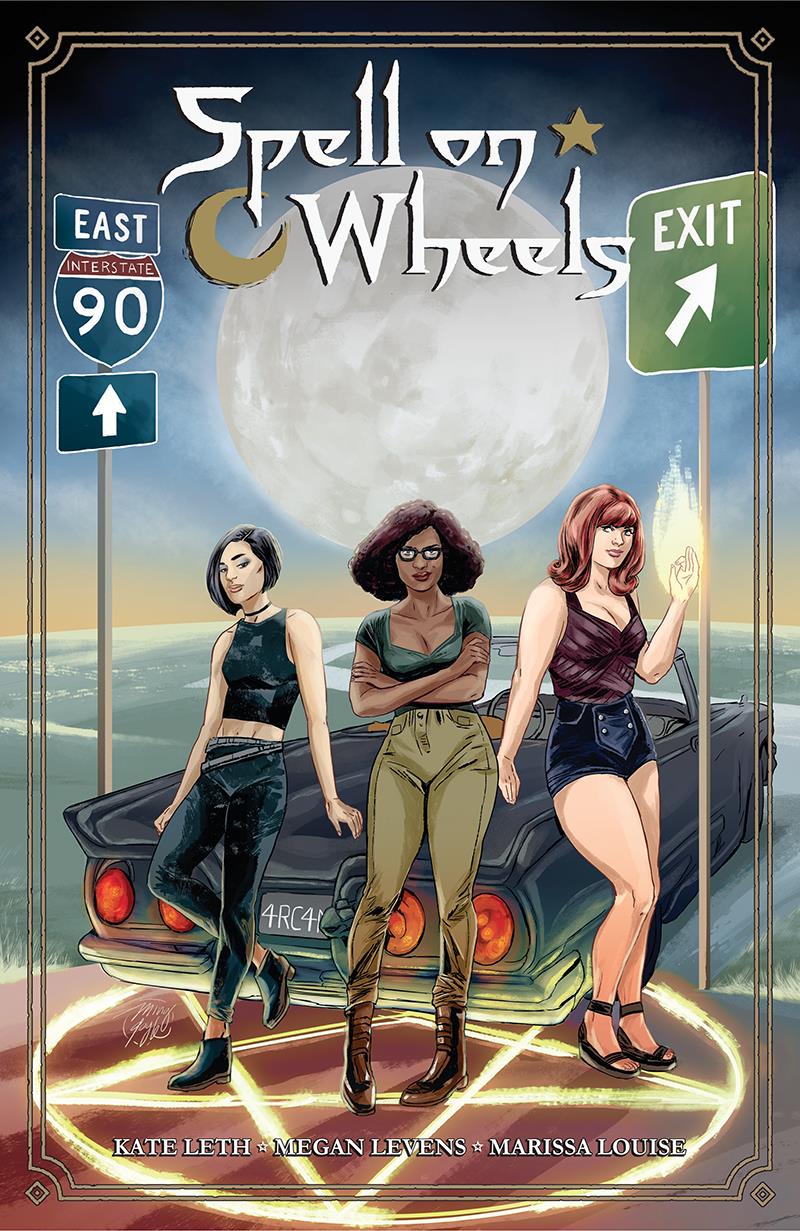 Spell on Wheels published by Dark Horse is the next comic book featured in the episode. This book is written by Kate Leth with art by Megan Levens. The book features a cool Goblin Marketplace which is basically a black market magical eBay! People have been dreaming about Goblin Markets for a very long time, some even wrote poetry about them like poet Christina Rossetti.
Spell on Wheels published by Dark Horse is the next comic book featured in the episode. This book is written by Kate Leth with art by Megan Levens. The book features a cool Goblin Marketplace which is basically a black market magical eBay! People have been dreaming about Goblin Markets for a very long time, some even wrote poetry about them like poet Christina Rossetti.During their magical rode trip, our witches meet a lot of interesting characters but none more than the sexy Satyr Paul! Claire, one of the witches, recounts a legend about a goat boy which just so happens to be based on a real Maryland local legend about a goat man.
The young witches of Spell on Wheels use various methods of divination including the tarot, writing planchettes and seances. Mysterious Planchette is a site that provides a history of planchettes, a gallery, patents and other cool information. If the tarot is more to your liking, check out Sacred Seed, the wonderful and informative YouTube channel of tarot reader, collector and super tarot enthusiast Elle! The tarot blog of tarot reader and teacher extraordinaire Mary K. Greer is a must!
Black Monday Murders
5.0 / 7.0
Our last featured comic book is Black Monday Murders (BMM) published by Image Comics! Black Monday Murders is written by Jonathan Hickman and art by Tomm Coker. The book features some pretty nasty biblical angels and demons such as Mammon and Abaddon which seem tailor made for the financial world. Be sure to also read these insightful interviews with Jonathan Hickman and Tomm Coker about the story.
The book features an NYPD Detective who has a familial background steeped in Voudou. He is seen using an old divination system called "throwing the bones" that is practiced around the world. The Association of Independent Readers & Rootworkers explain this intriguing system of divination.
Black Monday Murders features a ton of blood magic and magical cannibalism. These folks literally consume their power! The Magical Power of Cannibalism is a great article on magical and ritual cannibalism.
Sigil magic plays a big part in the BMM story and art. Gordon White of Rune Soup wrote a wonderful blog post on how to get big magic from sigils.
Financial conspiracy theories are rampant in our culture and BMM certainly takes advantage of many of these theories including ones involving the Rothschild family.
Comic Recommendations
Lastly, we end the episode with comics to watch! We talk about several books that are currently available to read, some which are just beginning and a few that are forthcoming, these include:
Harrow County, Brutal Nature, Brutal Nature: Concrete Fury, American Gods: Shadows, Songs for the Dead, Life, Death & Sorcery, Heathen, and The Circle.
If you have any feedback or review suggestions, please contact us!
If you're liking the show, please follow us on social media and review us on iTunes.
Monday, February 13, 2017
The Wytch Files Ep. 15: The Love Witch
7.0 / 7.0
 SHE'S DETERMINED TO FIND TRUE LOVE WITH A LITTLE HELP FROM MAGICK!
SHE'S DETERMINED TO FIND TRUE LOVE WITH A LITTLE HELP FROM MAGICK!Hail and welcome! We are back from our winter hibernation with a Valentine treat for you! Did you miss us? We certainly missed all of you and are VERY excited to bring you our latest episode on "The Love Witch," written, directed and produced by the brilliant and creative superhero Anna Biller. The film had a limited release in 2016 and we had the pleasure of catching it in November, right here, in good ole Brooklyn, New York.
The Love Witch is the story of a young and beautiful witch named Elaine (played by the immensely talented Samantha Robinson) who is looking for the love of a good man. As a witch, she uses potions and love magick to attract the right man. Her love magick, however, works just a little to well and causes a series of mishaps and even deaths for her would be suitors. She finally meets the man of her dreams but this too leads to tragedy!
Please check out the movie's website to watch the trailer, view a gallery of photos and to see the schedule of screenings.
During her promotion of the film, Anna Biller wrote some fantastic blog posts and gave some wonderful interviews here and here that provided some illuminating insight into the film and it's pre-production. In an interview with Refigural, Ms. Biller talks about some of her influences for the film. Be sure to check out Ms. Biller's website where you can read her blog and find out about her other film work.
 |
| Edwige Fenech |
 |
| Alex and Maxine Sanders |
 |
| Morgan-Greer and Thoth tarot cards |
In the episode, we mention how the tarot particularly the Morgan-Greer deck by Bill Greer and the Thoth deck by Aleister Crowley influence the aesthetics of some of the film's costumes and Elaine's home. We discuss magical crafts and the importance of costumes and wardrobe in glamour magic. We also mention the Gunne Sax dresses of the 1970's worn by Elaine in the film which were truly gorgeous!
We talk feminism, cake, the female arts, and how burlesque became a mode of modern female empowerment. The art of burlesque performance is beautifully showcased in the film! The infinitely sexy burlesque dancer April Showers is featured in the film. We also discuss the overlap in the performing arts with pagan and occult subcultures as well as the pagan scene of the 1970's.
Theme music X-Files Theme Parody by Mallon Khan.
If you have any feedback or review suggestions, please contact us!
If you're liking the show, please follow us on social media and review us on iTunes.
Subscribe to:
Posts (Atom)



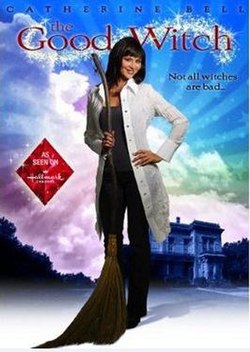

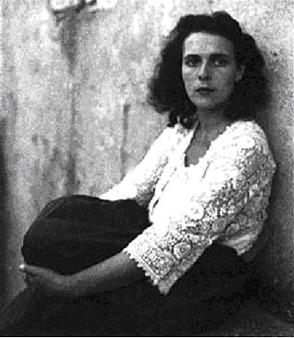
 3.5/7.0
3.5/7.0